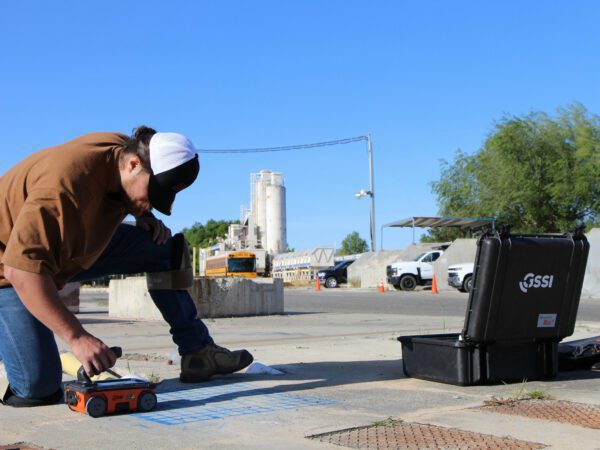The Importance of Professional Concrete Scanning Services
The Importance of Professional Concrete Scanning Services
Blog Article
Beyond the Surface Area: Leveraging Advanced Concrete Scanning Techniques for Unmatched Precision and Understanding
In the realm of building and facilities maintenance, the mission for accuracy and thoroughness is unending. Advanced concrete scanning techniques have actually emerged as crucial tools in this quest, providing a glance underneath the surface area to introduce a globe of important understandings. By utilizing cutting-edge modern technologies, professionals can reveal abnormalities, assess the problem of concrete structures, and make educated decisions that shape the program of projects. The implications of these strategies prolong far beyond plain surface-level examinations, guaranteeing a deepness of accuracy and understanding that is unequaled.
Importance of Advanced Concrete Scanning
The significance of making use of innovative concrete scanning strategies depends on the unrivaled precision they use for finding sub-surface abnormalities and making certain architectural honesty. By using sophisticated technologies such as ground-penetrating radar (GPR), electromagnetic induction, and progressed finder imaging, construction experts can dive beneath the surface area of concrete structures with a level of accuracy that much surpasses standard examination methods. Concrete Scanning. These techniques make it possible for the identification of concealed threats like rebar corrosion, gaps, conduits, or post-tension cable televisions that could endanger the security and safety of a structure with time
Moreover, advanced concrete scanning provides invaluable insights right into the overall problem of a concrete component without the demand for invasive procedures, lessening the risk of creating damage during the evaluation procedure. The capacity to pinpoint the precise area and depth of possible concerns permits targeted repair work and upkeep, inevitably prolonging the lifespan of the structure and enhancing its efficiency. Fundamentally, the relevance of advanced concrete scanning can not be overstated in the realm of construction and infrastructure upkeep, where accuracy and reliability are critical.
Kinds of Cutting-Edge Technologies

Abnormalities and Problem Discovery

In enhancement to GPR, concrete scanning techniques like thermography and impact-echo screening are additionally efficient in discovering flaws and abnormalities. By leveraging these advanced strategies, professionals can proactively address architectural issues, guaranteeing the longevity and safety of concrete frameworks.
Assessing Concrete Problem
Exactly how can engineers accurately evaluate the problem of concrete frameworks to ensure her latest blog their longevity and safety and security? Analyzing the concrete problem is a vital element of maintaining framework stability. Different advanced concrete scanning strategies are utilized for this purpose. Ground-penetrating radar (GPR) is commonly made use of to examine the internal framework of concrete, finding spaces, cracks, and various other anomalies that might jeopardize its strength. In addition, impact-echo testing can provide understandings into the density and stability of concrete elements. Ultrasonic pulse speed testing is an additional useful technique for reviewing concrete quality by measuring the rate of sound waves via the product.
Additionally, visual evaluation continues to be an essential component of concrete condition evaluation. Designers aesthetically analyze the surface area for signs of degeneration, such as spalling, fracturing, or discoloration. Integrating non-destructive screening methods with visual assessments permits for an extensive examination of concrete problem, enabling engineers to determine possible issues at an early stage and carry out prompt maintenance or repair work. By leveraging these sophisticated strategies, designers can ensure the long-term toughness and safety and security of concrete structures.
Enhancing Decision-Making Procedures
In the world of framework monitoring, maximizing decision-making procedures is critical for making certain the efficient maintenance and long life of concrete structures. Boosted decision-making procedures in concrete management entail making use of sophisticated scanning methods to gather thorough information on the condition of structures. By leveraging technologies such as ground-penetrating radar and 3D imaging, stakeholders can make enlightened choices pertaining to reinforcement, substitute, or fixing approaches.
These progressed scanning techniques provide very useful understandings into the interior make-up of concrete, determining possible problems such as voids, cracks, or rust that might not be noticeable externally. This level of detailed details enables for proactive upkeep planning, minimizing the her response danger of structural failings and enhancing the total life expectancy of concrete structures.
In addition, by integrating digital paperwork and analysis devices into the decision-making procedure, stakeholders can track the evolution of concrete problems over time, allowing predictive maintenance approaches and optimizing resource allowance. Eventually, the integration of sophisticated concrete scanning techniques improves decision-making procedures by offering unparalleled accuracy, insight, and performance in infrastructure administration.
Conclusion
Finally, progressed concrete scanning techniques use unparalleled accuracy and understanding in detecting abnormalities, defects, and examining the pop over here problem of concrete structures. By leveraging innovative modern technologies, decision-making processes can be enhanced, causing even more effective and enlightened solutions for preserving and fixing concrete framework. These strategies play an essential function in making sure the safety and security and longevity of concrete structures, making them an important device in the area of building and construction and engineering.
Moreover, advanced concrete scanning offers vital understandings right into the total problem of a concrete component without the requirement for invasive steps, decreasing the threat of creating damages during the evaluation process - Concrete Scanning. An additional innovative modern technology is 3D X-ray scanning, which provides in-depth images of the internal framework of concrete, offering important information without the need for damaging testing. Additionally, Concrete Cover Meters are used to measure the density of concrete cover over support bars properly. Improved decision-making processes in concrete administration involve utilizing advanced scanning strategies to collect in-depth data on the condition of structures.In verdict, progressed concrete scanning methods provide exceptional accuracy and understanding in identifying abnormalities, flaws, and evaluating the problem of concrete frameworks
Report this page